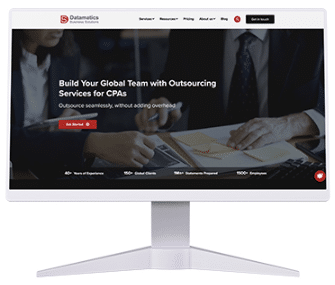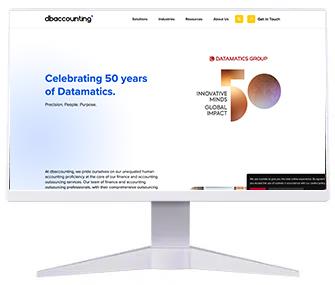Introduction: Why Do Enterprise Deals Need More Than a Great Pitch?
In today’s hyper-competitive B2B landscape, delivering a killer pitch is no longer enough to win an enterprise client. Sharp presentations and impressive capabilities are a thing of the past. To win an enterprise client today, you need to place yourself as their partner. You need to lay the groundwork for long-term, resilient partnerships that are built on trust, value, and consistent delivery.
Every brand talks about innovation. Every company claims to drive results. Yet reality narrates a different story. Many organizations struggle to move beyond buzzwords and create meaningful impact for their clients. In fact, 66% of global decision-makers report a surge in marketing and sales content, while 38% admit they can’t keep up with the flood of information competing for their attention. But the question here that needs asking is how useful are these?
Also, this content overload has changed the picture completely. Enterprise buyers are no longer impressed by noise. They crave clarity and credibility. They are looking for partners who understand their challenges, align with their goals, and execute with precision.
Simply touting technology or producing more content isn’t enough anymore. Enterprise clients want collaborators, not vendors. They want partners who bring insight and reliability. Ones who can perform all tasks with transparency.
Leading growth strategy experts say that successful enterprise partnerships are built on three foundational pillars. These are – Clarity, Collaboration, and Execution.
In this blog, we discuss how to evaluate your client relationships, strengthen engagement, and sustain long-term growth by mastering these three essentials.
Pillar #1 Clarity: Define Success from Day One
The most effective partnerships start not with a solution, but with a shared, measurable vision of success. Without a crystal-clear understanding of the desired business outcomes, all projects are doomed to drift. Hence, the first step to building a lasting relationship with an enterprise – clarity.
So what does clarity look like? Well, you can start by setting up the measurable outcomes. A strong partner defines what success means in concrete business terms. This moves the conversation beyond marketing metrics to focus on real ROI. This sets up the stage for complete alignment, removing all confusion.
But clarity isn’t limited to defining success. It is also about aligning expectations. It is a key warning sign that many miss when entering into partnerships with enterprises. If a prospective client demands immediate, dramatic results without willing to invest in foundational work (like accurate data, audience insights, or proper systems), it often signals a trouble spot ahead. Short-term fixes rarely deliver lasting impact without a solid foundation. It is thus essential to set those expectations correctly from day one.
Clarity lays the foundation for trust. When both sides align on purpose and priorities, collaboration naturally becomes the next step
Pillar #2 Collaboration: Treat the Client as a Co-Creator
Securing an enterprise client happens long before the final pitch. It starts with deep research and preparation, but it is secured through a collaborative process that grants client ownership over the solution.
How to achieve co-creation? Start with research and offer tailored values. Successful firms study industry shifts, competitor moves, and prospects’ recent priorities. This preparation ensures that the first conversation is specific, not generic.
The next step to collaboration is to create the roadmap. Instead of simply presenting a finished plan, you should use collaborative sessions to co-create the roadmap with client stakeholders. This approach will build an instant buy-in and ensure all parties see their fingerprints on the solution. This will also make it easier to sustain momentum post-contract.
The third essential point to building collaboration is to create contextual storytelling. Complex solutions must be translated into tangible outcomes for different stakeholders. Frame the same capability in language that matters to their role. For instance, for a CMO, emphasize faster go-to-market; for a VP of Marketing, emphasize scalability and data-backed proof points. Since the goals differ from one role to another, it is essential to narrate them a story that they understand and relate to.
Pillar #3 Execution & Trust: Building Resilience with Rituals
While clarity and collaboration are imperative, you always have to think through your commitment to execution and follow-through. This is what separates small gains from transformative results.
Furthermore, sustaining trust requires building resilience into the relationship through proactive communication.
So how do you build long-term trust? Ensure all stakeholders are aligned before moving on to execution. Misalignment across client teams can cause slow execution. To prevent this, always build a discovery and alignment phase into the start of the project. Ensuring all stakeholders agree on objectives, timelines, and metrics upfront saves time, cost, and frustration down the line.
Also, it is essential to have a quarterly review system in place. Long-term trust requires rituals that go beyond simple status reports. A quarterly review takes a step back from KPIs to evaluate the bigger picture. The focus here falls on what is working, where opportunities lie, and how to push the needle further. This transparency reinforces trust and naturally opens the door to deeper, sustained collaboration.
Conclusion
Gaining and keeping enterprise clients requires more than just producing outcomes. It’s about adopting the mindset of a loyal partner. By implementing an operating structure based on these three fundamental characteristics, a vendor can be distinguished from a valued growth partner. If you want to succeed with your clients, you need to have clarity of vision, should have the openness to collaborate, and have an uncompromising dedication to execution.
Organizations may transcend transactional connections and establish a steady, long-term revenue stream by prioritizing stakeholder alignment, contextualizing value, and investing in trust-building procedures. The most fruitful B2B collaborations are characterized by this.
At Datamatics, partnership is not just a philosophy. It is our operating DNA. With over 50 years of experience and a track record of serving 500+ enterprise clients globally, we have built deep expertise across services such as data enrichment, data cleansing, intent-based lead generation, and Center of Excellence (CoE) development.
Our role doesn’t end with project delivery. We embed ourselves within your ecosystem as your end-to-end growth partner, driving measurable outcomes and sustainable success.
If you are interested in learning how we can help you scale smarter, fill out the form and our experts will connect with you.
Like what you read? Subscribe to our newsletter and stay ahead of the latest trends.

Sumantra Mukherjee


